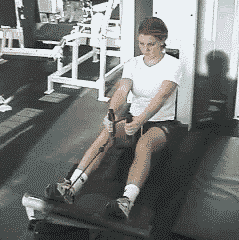<% ns_puts [mkm_getnavbar] %>
Periodization Training
for Tennis
Upper Body Exercises
Upper Body Exercises
By Dr. Paul Roetert, Former USTA Sports Science Administrator,
USTA Player Development Center, Key Biscayne, Florida
Periodization training means learning to train very
specifically for tennis, and also, timing the training so a player peaks
at targeted times for specific competitions. This could be
Wimbledon, a USTA league season, or your club championship, the
principles work at all levels.
In fact following this program is virtually
guaranteed to raise your level of play without making any other changes in
your strokes or game. Not to mention its great
for your health.
So far in this series we have outlined includes warm-up
exercises, stretching, and tennis specific strength training, including
the rotator cuff program featured in the last article. The
next two articles focus on additional upper body exercises. This will be
followed by our forearm and wrist program, and then we’ll move into on court
movement training drills. When we’ve presented the entire program, we’ll
tie everything together and show you how to design a customized program
that uses all the elements to help you achieve your competitive goals. Stay with us—it’s the chance to develop a real edge! Weight training for tennis doesn’t require building
tremendous muscle mass. The goal is not to bench press 200 pounds or
develop a weight lifter’s physique. The goal is to get stronger
and more powerful for tennis, increase your ability to hit the ball
harder, and give you the endurance to do it consistently over long
matches. In general you will work with lighter weights, start
with 1 set and build up to 2-3 sets with 10-15 repetitions. Your
exercise movements should be smooth, controlled, and rhythmic. Here are the first five upper body exercises. The next article follows up with five more. Focus: Develops back, shoulder and arm muscles,
including the rhomboids, trapezius, deltoid, and biceps. Exercise: Start with your knees slightly flexed.
Keep your upper body erect, and pull toward your chest and upper abdomen
area. Slowly return to start position and repeat.
Seated
Row
Read the rest of this article
To contact us, please email to: webmaster@tennisone.com
TennisONE is a registered trademark of TennisONE and SportsWeb ONE; Copyright 1995. All rights reserved.
